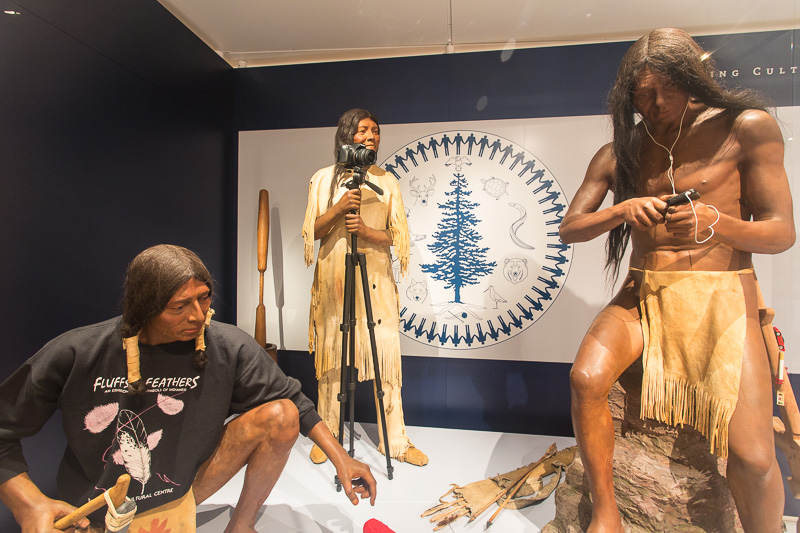As a photographer, I’m naturally drawn to a display in the First Peoples Exhibit at the Royal Ontario Museum. It’s a “Mohawk Family Life Group Diorama” composed of plaster figures by an American sculptor who completed them for the museum in 1917. As the accompanying description indicates: “Such static displays give a misleading picture of indigenous cultures as unchanging, trapped in the past, and out of contact with other groups or historical events.” The museum tries to disrupt the static quality of the formal exhibit by challenging the museum-goer’s assumptions. Here, among other things, an indigenous woman in traditional dress holds a digital camera on a tripod.

Not only does the figure challenge our assumption about indigenous culture as static and isolated from other (Western) cultures, but it also challenges our assumption about who is entitled to make observations about the relationship between cultures. Typically, non-indigenous people regard themselves as the observers. The act of observation imposes a distance between subject and object and relegates the indigenous object to “the observed.” But in this instance, the observed is using her camera to make observations of her own.